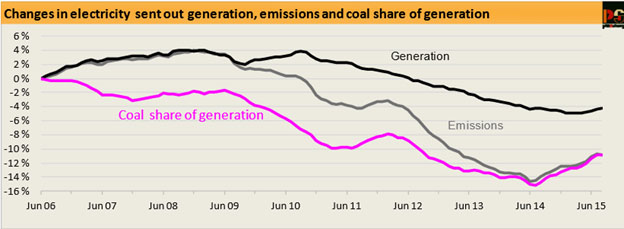 More than 150 highly engaged people from 10 countries attended HOMER Energy’s 3rd and largest annual microgrid conference in Canberra, Australia on October 14 and 15 2015. The meeting kicked off with an inspiring and motivating opening keynote by Simon Corbell, Deputy Minister of the ACT Government and Minister of Environment and Planning. ACT has chosen to be a leader in Australia, with a goal of 100% renewable energy by 2025.
More than 150 highly engaged people from 10 countries attended HOMER Energy’s 3rd and largest annual microgrid conference in Canberra, Australia on October 14 and 15 2015. The meeting kicked off with an inspiring and motivating opening keynote by Simon Corbell, Deputy Minister of the ACT Government and Minister of Environment and Planning. ACT has chosen to be a leader in Australia, with a goal of 100% renewable energy by 2025.
Minister Corbell made the point that the standard is not a lofty goal of being green – it’s good politics. Renewable energy is about more than reducing greenhouse gases – it’s about creating employment and economic development. How refreshing to hear a politician who gets it! The ACT plan combines a mix of utility-scale renewables and distributed generation. Fielding a question about the relative importance of the two approaches, the Minister acknowledged that while distributed generation must be part of the solution, that the utility-scale approaches were necessary in order to achieve the goal on their schedule. Minister Corbell’s keynote was followed by an opening from HOMER Energy CEO Peter Lilienthal on the state of the microgrid world as well as new developments in HOMER and HOMER Energy.
Professor Kenneth Baldwin, Director of the Australian National University Energy Change Institute (and Deputy Director of the Research School of Physics and Engineering), opened the second day with a keynote on microgrid research and innovation in Australia. Dr. Baldwin discussed cooperation between Australia and Indonesia, which share many energy issues:
- Energy resource rich
- Highly carbonized economies
- Need for remote energy access
- Future energy demand challenges
One of the biggest “ah ha!” moments in Dr. Baldwin’s talk was this graph (from Pitt and Sherry 2015), showing a rebound in both the emissions and share of coal in Australian electricity generation after June 2014, which was when the carbon tax was repealed. Dr. Baldwin said that economics is often criticized for not having an experiments, but that this was a clear economic experiment with a very definitive result.
Microgrid 2015 was about 60% larger than HOMER Energy’s last conference, and pardon the unintentional play on words, but the energy of the conference was truly electric. The sessions were arranged in sections of 2-4 people each, with questions held to the end, so there was often lively discussion and differing viewpoints expressed.
The sessions included Utility Perspective, Microgrid Development Issues, Islanded Microgrids, Campuses, Microgrids for Energy Access, Technology for Microgrids, and The Role of Storage in Microgrids. There was also a lively panel discussion focused on Microgrids as Part of a Residential Property Development.
The very last session of the main event, focused on energy storage, had representatives from two different flow batteries (EnSync and UniEnergy), lead-acid batteries (Trojan), and a super-safe, environmentally friendly Aqueous Hybrid Ion battery (Aquion Energy) on stage at the same time, all making compelling arguments for the value of their technology for various applications.
The choice of Canberra for the meeting is because Australia has long been one of the top and markets for the HOMER software. As a company in contact with practitioners in distributed generation and microgrids for many years, we’ve always recognized Australia as a center for innovation. It was interesting to visit and see the view from the inside, where things can appear to be an uphill battle. We at HOMER Energy were very gratified to see the excitement present at the meeting, and we think that there’s a bright future for distributed generation and microgrids in Australia and the greater Pacific region.


I agree!